 Click here to go to the Official Website for the City of Opelousas. Opelousas, population 20,000, third oldest city in Louisiana, is the parish seat of St. Landry Parish. It is situated at the juncture of Interstate 49 (exits 15-19) and U.S. Highway 190. Major new businesses are locating near Opelousas. In 2000, Wal-Mart opened a $90 million distribution center north of the city on a 200-acre tract located off Interstate 49 at exit 23.In addition, Evangeline Downs, a horse racing track, will be relocating from Lafayette to a site near Opelousas. Evangeline Downs is a "racino," offering various electronic gaming devices and other entertainment in addition to horse racing.
As far back as 1690, French traders carried on a lucrative trade with the Opelousas Indians (the name Opelousas means Blackleg). The exact year in which Opelousas can be considered to have been established is uncertain, but records indicate that the first land grant to a settler in the Opelousas area was made in 1782. Opelousas was part of the Louisiana Purchase acquired by the United States in 1803. It was incorporated as a town in 1821. During the Civil War, Opelousas became the state capital after Baton Rouge fell under Union control. This rich history is reflected in the traditions carried on by the people of Opelousas today.
Tourist InformationGeneral Information. For information on exploring Opelousas, contact the St. Landry Parish Tourist Commission, P. O. Box 1415, Opelousas, LA 70571, 1-877-948-8004; fax (337) 948-1579; or the Opelousas Tourist Information Center, 829 East Landry St., Opelousas, LA 70570, (337) 948-6263. The tourist commission has a web site on tourist attractions and related information for St. Landry Parish. The list below is just a sampling of the many attractions in Opelousas and area towns.
Opelousas Museum and Interpretive Center. Located at 315 N.
Main St., the museum is open 9 a.m.-5 p.m. Monday through Saturday. The Civil War
Room highlights the city's role as capital of Confederate Louisiana and subsequently as a
federal post and military depot. The Geraldine Smith Welch Doll Collection contains more
than 400 dolls. The main exhibit room covers history (and prehistory), culture, business,
and other aspects of life in Opelousas.
The Opelousas Museum of Art. The Wier House, which is on the National Register of Historic Places, is now the Opelousas Museum of Art. The building is located at the corner of Union and Bellevue streets. Nan Wier is the director of the museum, which features rotating exhibits. For hours and other details, go to the museum's web site. Music and Market Concerts. Every spring and fall, a series of free live concerts is organized on Friday evenings, usually at the Farmers Market Pavilion on Highway 190 (St. Landry St.) on the east side of town. In addition to Cajun and Zydeco bands, the series features fresh produce from area farmers.
Old Opelousas. The area around the Court House Square is a National Historic District. Visitors can walk on old brick sidewalks dating back to 1838, and some homes date from before the Civil War. For a guided tour of the city, pick up a map at the Opelousas Tourist Center (located in the Jim Bowie Museum) or contact the center at 1-800-424-5442.
The Zydeco Extravaganza. The Extravaganza is held the Sunday before Memorial Day, featuring a full afternoon and evening of great zydeco music. Go to the event's web site. Opelousas Spice and Music Festival. Held in early June, the festival features music, carnival rides, great food, and other entertainment. Check out the festival's web site. Other Attractions. For information on the many other events and attractions in Opelousas, go to the city's web site or the the parish tourist commission's web site. Attractions in Nearby Towns
Historic WashingtonWashington, located just down the road from Opelousas (and easily
accessible from I-49), still maintains much of the charm of an antebellum town that was
settled about 1800. Before the Civil War, it was a turning point for steam vessels that
traveled up the Mississippi from New Orleans. The town has a number of fine old homes,
some of which are open for tours. The style of homes ranges from board and batten Acadian
cottages to plantation houses. You can also browse through the many antique shops located downtown.
In addition, many visitors enjoy the food and atmosphere of a restaurant located in a
renovated steamboat warehouse. The Catfish Festival, held the third weekend in March,
includes music, food and special tours of the old homes. In addition, during the fall and
spring, the local Garden Club hosts a concert series, "Music in Historic Sites."
Other AttractionsAmong the other noteworthy attractions in St. Landry Parish are the Etouffee Cookoff in Arnaudville each April, the Sunset Festival of Herbs and Gardens in May, and a variety of other festivals listed by the Parish Tourist Commission. A separate page covers the City of Eunice and the Liberty Theater. Economic DevelopmentThe St. Landry Parish Economic and Industrial Development District focuses on developing employment opportunities, promoting economic development in disadvantaged communities, improving infrastructure, and promoting the overall welfare of the citizens of the parish. For additional resources, contact the Opelousas-St. Landry Chamber of Commerce. Opelousas is the site of the T.H. Harris campus of Louisiana Technical College, a statewide system of vocational-technical schools. Return to Central Acadiana Gateway Main Page Updated March 2009 |
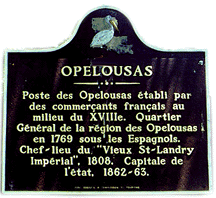
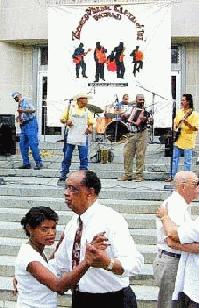
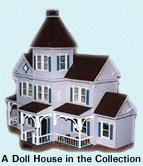
 The museum also is a repository for materials related to the
Southwest Louisiana Zydeco Music Festival. For details,
The museum also is a repository for materials related to the
Southwest Louisiana Zydeco Music Festival. For details,
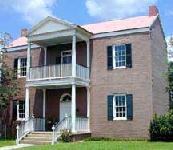
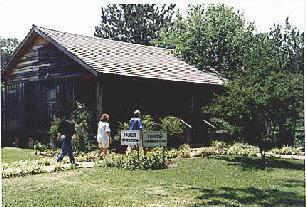
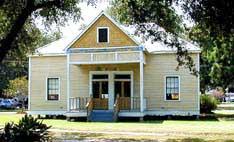
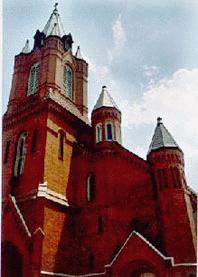
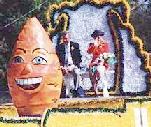
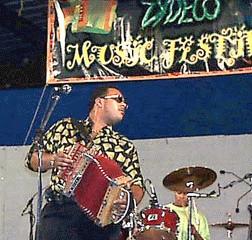
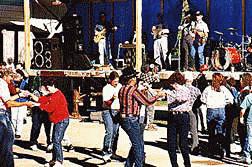
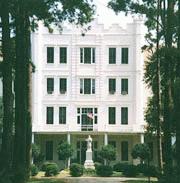
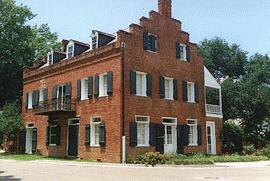 Many stores in the commercial district
also retain the old shop fronts from late in the 19th century.
Many stores in the commercial district
also retain the old shop fronts from late in the 19th century.